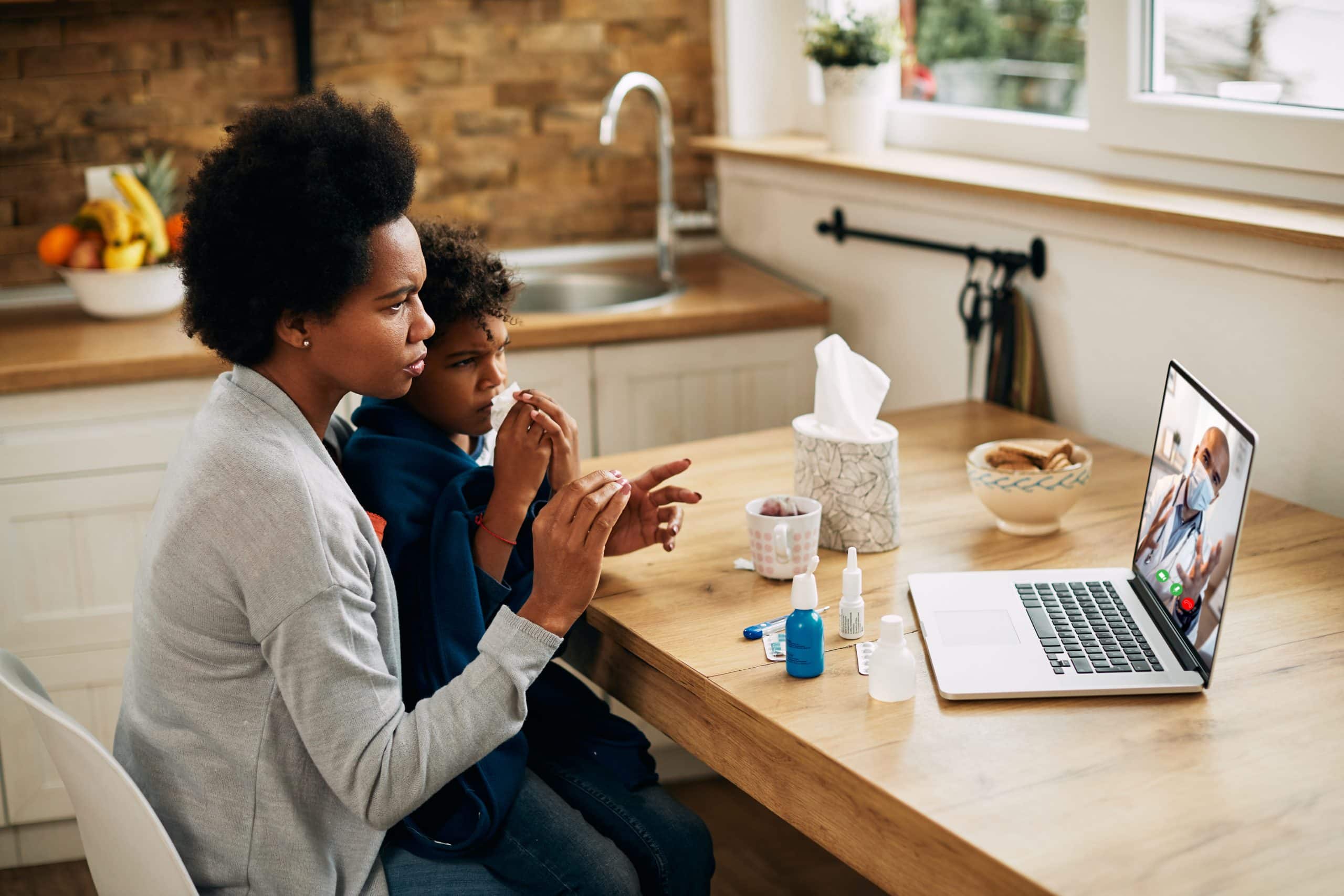With the popularization of the telephone in the twentieth century, patients gained easier access to their healthcare providers without visiting them. Most phone were for scheduling an appointment, requesting refills, or requesting a call-back. If you were able to speak to a doctor, you were usually told to ‘go to the emergency room’ or ‘come in tomorrow for evaluation.’ This is not because doctors are lazy or mean – promise! It is simply because there isn’t much that doctors can do from obtaining a medical history alone over the phone. In contrast to those old days, we now have telemedicine, thanks to the improvement of internet speed and video technology.
Telemedicine has opened a whole new way of healthcare delivery as physicians are able to not only obtain history, but also ask patients to perform certain maneuvers on their own, such as:
- Feeling for knots on a tender area for muscular pain evaluation
- Movement of the spine to assess back pain
- Pushing on different parts of the abdomen to evaluate abdominal pain
Physicians also obtain a visual assessment of your health:
- They can examine any skin lesions, swelling, discoloration, wounds and scarring
- Look for signs of anemia or jaundice
- Observe mental health by observing how patients present, behave and answer
The use of telemedicine dramatically increased during the COVID-19 pandemic, from 43% of healthcare facilities before 2020 to 95% utilization today. Telemedicine has become so popular that it is most likely here to stay, even after the pandemic is over.
How does telemedicine work exactly?
After giving your consent, a nurse will typically call you shortly before the appointment to make sure that technical aspects of the visit are ready. You may receive a link to connect. It is preferable to use a computer with a camera, mic, and ethernet connection (WIFI or wired), but a smartphone can be used as well. Once you and the provider are both connected to the video session, the visit progresses just as any in-person encounter. It is helpful to be ready to report any vital signs, like recent blood pressure, temperature or blood sugar levels.
After speaking with you to obtain the history about your concerns, the provider may ask you to perform certain maneuvers as listed above.
Who is best served by using telemedicine?
Throughout the pandemic, numerous patients with known or suspected COVID-19 infection have been evaluated by providers through telemedicine for guidance and treatments. In addition to COVID-19, many common minor illnesses such as upper respiratory infections, urinary tract infections, allergies or skin lesions were addressed.
Some of my patients who live in rural areas really enjoy telemedicine because it saves two to three hours of travel and personal time! For routine follow-ups for chronic, controlled health conditions such as high blood pressure, COPD or obesity, telemedicine is a great option.
The most useful application of telemedicine, in my opinion, is addressing mental health conditions such as depression, anxiety, psychosis and/or substance dependence. Since these visits require a good history and mental status evaluation without a hands-on examination, providers can diagnose and treat mental conditions with higher accuracy and efficiency.
What are the limitations of telemedicine?
Of course, telemedicine is not perfect and has its own limitations. Here are a few instances where an in-person visit is best:
- Chest pain or shortness of breath
- Signs of stroke, call 911!
- Telemedicine is helpful for patients in rural areas, but limited internet access can decrease the quality of telemedicine visits.
- Diabetic patients often need HgA1c levels checked every three months, so telemedicine would not be the best option for them. They may obtain lab orders from the provider and get A1c tested before the visit but would still have to physically go to a facility for that.
- Elderly patients who may not have technological proficiency. To help, ask the office staff to assist!
Although it certainly has limitations, telemedicine has become an incredibly valuable tool for both patients and providers. The next time you need to schedule a visit with your doctor, ask the staff if a telemedicine visit would be appropriate.
Learn More
If you’re interested in a telemedicine visit but do not have a primary care provider, visit www.nghs.com/video-visits for more information.



